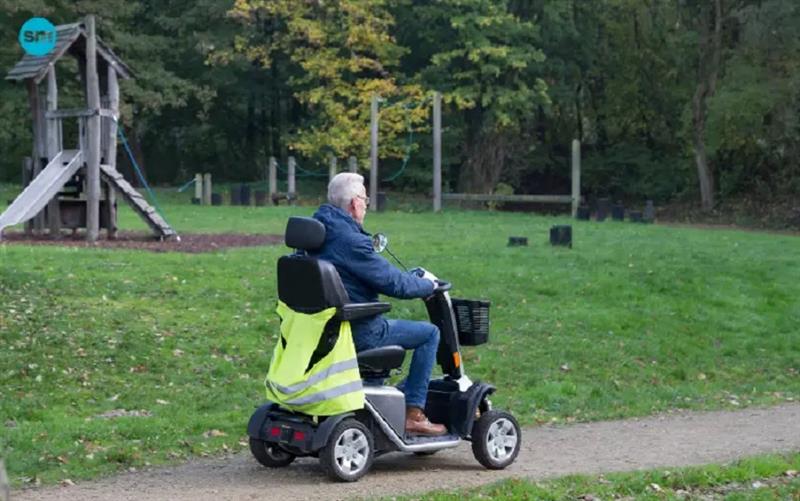
When personalizing your choice and comparing mobility scooters, it's crucial to consider a wide range of factors beyond the basic specifications. From control customization and storage options to tech features and safety considerations, every aspect plays a role in enhancing your mobility and overall quality of life. By thoroughly evaluating these points, you'll be well-equipped to select a mobility scooter that aligns perfectly with your needs, preferences, and aspirations, empowering you to embrace life with newfound freedom and confidence.
As technology continues to advance and cater to various aspects of our lives, it's no surprise that personalization has become a key factor in many decisions we make. This extends even to mobility solutions, where the concept of personalization has found a home in the realm of mobility scooters. These innovative devices empower individuals with limited mobility to regain their independence and explore the world around them.
Comparing Mobility Scooters
To help you make an informed decision, let's compare some popular mobility scooter models based on key criteria:
1. Control and Maneuverability:
Adjustable Controls: Some mobility scooters allow users to customize the positioning of control panels and handles for optimal reach and comfort.
Turning Radius: Consider the scooter's turning radius, especially if you'll be navigating through tight spaces or crowded areas.
2. Storage and Foldability:
Foldable Designs: For individuals with limited storage space, foldable scooters are a practical option as they can be conveniently stored in smaller areas.
Detachable Parts: Certain models offer detachable components for easy storage and transportation.
3. Speed Settings:
Variable Speeds: Mobility scooters often come with multiple speed settings, allowing users to adjust their pace based on the surroundings and personal comfort.
4. Tech and Connectivity:
Built-in Tech Features: Some scooters offer built-in USB charging ports, mobile device holders, and even Bluetooth connectivity for added convenience and entertainment.
Smart Display Panels: Look for scooters with intuitive and easy-to-read display panels that provide essential information such as battery life and speed.
5. Weight and Assembly:
Assembly Requirements: Consider whether the scooter requires any assembly, and if so, how easy it is to put together.
Lifting and Transport: Evaluate the weight of the scooter to ensure it can be easily lifted into a vehicle or onto a mobility ramp if needed.
6. Warranty and Support:
Manufacturer Support: Research the manufacturer's reputation for customer service and the availability of replacement parts.
Warranty Coverage: Check the warranty details to understand what repairs and maintenance are covered, providing you with peace of mind.
7. User Reviews and Recommendations:
User Feedback: Online reviews and testimonials from other mobility scooter users can offer valuable insights into real-world experiences.
Recommendations: Consult with medical professionals, occupational therapists, or mobility experts for recommendations based on your specific needs.
8. Safety Features:
Lighting and Reflectors: Ensure the scooter has adequate lighting and reflectors for visibility, especially when using it outdoors.
Safety Sensors: Some advanced models include sensors that automatically reduce speed when approaching obstacles.
9. Budget Considerations:
Cost vs. Features: Compare the features offered by different scooters in relation to their price to find the best value for your budget.
Long-Term Investment: While a higher initial cost might seem daunting, investing in a quality scooter can lead to long-term savings through reliable performance and fewer repairs.
10. Environmental Impact:
Eco-Friendly Models: Consider scooters that use energy-efficient technology or have lower environmental impact, contributing to a more sustainable future.
11. Portability:
Travel-Friendly Scooters: These compact scooters are designed for easy transport and are ideal for those who are frequently on the go.
Standard Scooters: Offering a balance between portability and features, standard scooters are suitable for daily activities and errands.
12. Battery Life:
Short-Distance Travel: Scooters with lower battery capacity are suitable for short trips and indoor use.
Long-Distance Travel: If you plan to cover longer distances, opt for a scooter with extended battery life.
13. Terrain Adaptability:
Indoor Use: Compact scooters with smooth tires are best for indoor environments.
Outdoor Adventures: Scooters with robust suspension systems and rugged tires are well-suited for outdoor exploration.
The Power of Personalization
The notion of personalization is all about tailoring products and services to cater to individual preferences, needs, and lifestyles. When it comes to mobility scooters, personalization takes on a new dimension, offering users the ability to choose a scooter that not only meets their physical requirements but also resonates with their personal style and daily routine.
1. Customizable Features:
Mobility scooter manufacturers have recognized the importance of customizable features. From adjustable seats and armrests to various color options, these scooters can be adapted to suit individual body types and preferences.
2. Accessories and Add-ons:
Beyond the basic features, mobility scooters can be accessorized to enhance functionality and comfort. Accessories like baskets, cup holders, and weather protection add-ons allow users to tailor their scooters to fit their specific needs.
3. Terrain and Performance Options:
Different models of mobility scooters are designed to handle various terrains. Whether you're navigating through urban streets, uneven paths, or indoor spaces, there's a scooter optimized for the job.